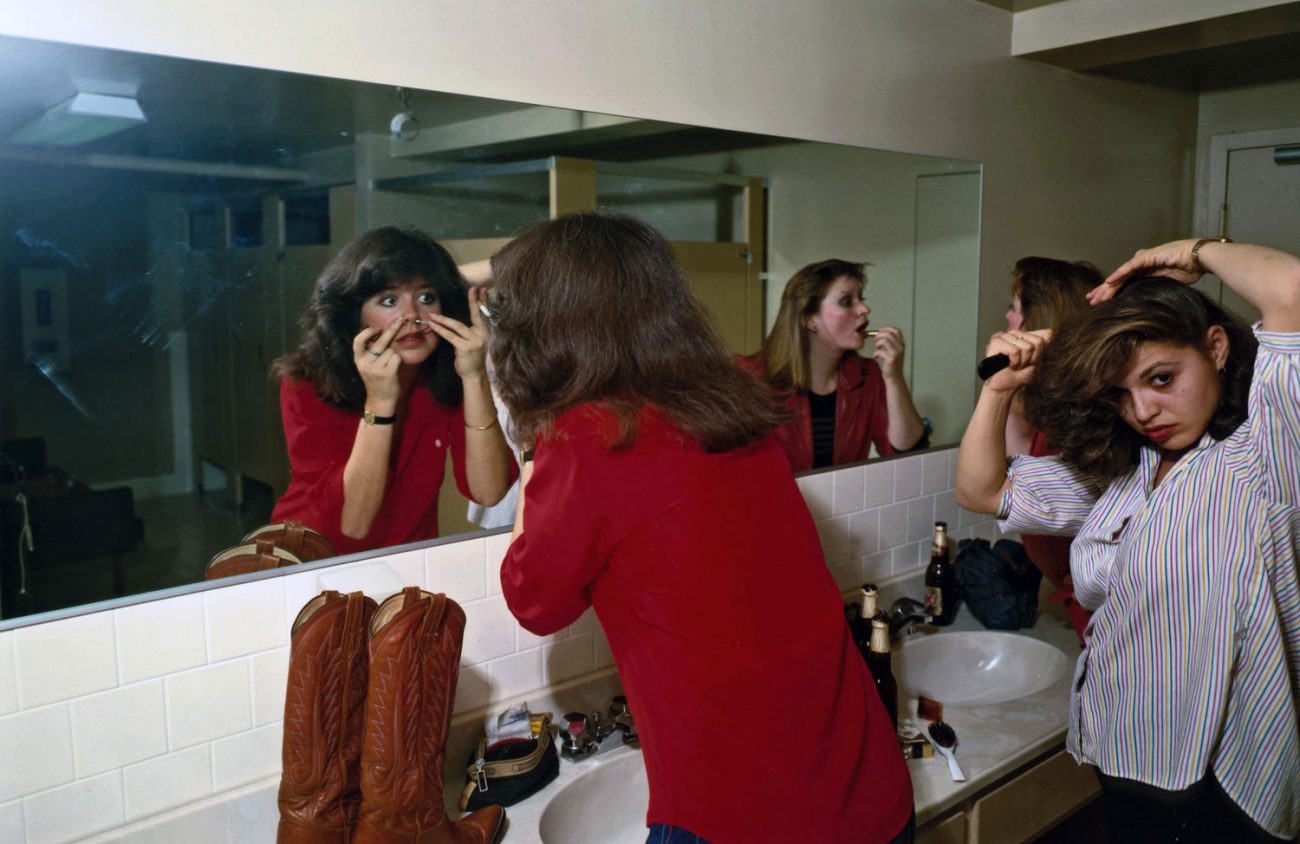The first time I met photographer Bill Owens was in 1980 in the women’s bathroom. I was 21. We were in the building where I worked, which was at a fashion publication in downtown Los Angeles. It wasn’t out of the ordinary to see a fashion shoot at work — but this wasn’t that.
Owens was one of a big handful of artists chosen to work on the Los Angeles Documentary Project, and he was at our office to take a photograph for his series on clichés about L.A.
By 1980, Owens was an admired artist and social commentator. I didn’t know this at the time, but my coworker and friend did, and she wanted to be in one of his pictures. We were going out that night but she said she had to stop first at work. It wouldn’t take long, she said.
I wasn’t supposed to be in the photograph that would be later entitled Garment District, Los Angeles, but it was raining that night and my hair was wet. It was when I was brushing it in the women’s room that Owens noticed me and asked me to step into his picture.
Years later in a college art history class, I learned who Bill Owens was. My professor explained that Owens’ 1973 book Suburbia documents the post-World War II migration from cities to the outskirts and portrays that moment when the American dream of home ownership became a reality. If you go to BillOwens.com, you’ll notice he explains it differently: “This book is about my friends and the world they live in.”
Owens spent many years working as a photographer for a newspaper, and his background in photojournalism informs his own projects. He often includes a brief description along with a photograph, as newspapers tend to do. In Suburbia, for example, we see a picture of a small boy on a Big Wheel bike holding a toy gun. The caption reads, in part, “I don’t feel that Richie playing with guns will have a negative effect on his personality …” The statement is obviously a quote, but Owens’ choice to include it next to the image leads the viewer’s mind toward social commentary.
The Portland Art Museum recently acquired some of Owens’ work from the early 1970s. Kitchen Drawer (1971) is available for viewing in their online collection. The drawer in the photograph is open so we can see what it contains. The image could stand for Owens’ work as a whole, looking into places others might think not to because they are too ordinary, finding beauty or art in the details of average living.
Owens says he didn’t start out to make “art.” He said this to me when we met this summer, a meeting that would not have occurred had I not stopped by Eugene Weekly one day to visit with arts editor Bob Keefer. I had been writing for the paper about a half a year but had not yet been to the EW building, and I was curious to see what a newspaper in the electronic age looked like. Keefer is a photographer, and we started talking photography — which led me to mention that I was in a photograph archived at the Smithsonian.
Next thing I knew I was being asked to contact Owens about it. I thought it was a long shot, because Owens and I had never been introduced, and he had no idea who I was. But I emailed him at the address on his website and received an immediate response. By chance he was coming up through Oregon on his way to Washington and would be in Eugene — the following day.
When Owens came to my house I was aware, more than usual, of the things I had in it, things that were covered or piled up as my husband was putting up new walls. He and my husband spoke about distilling, as Owens is now owner of the successful American Distilling Institute, and then he and I went to McMenamins North Bank and sat by the river, a far ways from L.A. and the lives we used to have, where we split a sandwich and talked about art.
Owens says his photographs don’t “cross that boundary into art.” (A number of art institutions would disagree, such as the Smithsonian American Art Museum, the Portland Art Museum, The Getty …)
The first time I saw the photograph pictured here, Garment District, Los Angeles, was when Keefer looked it up online a few days before Owens and I met formally for the first time. When Owens and I looked at the photograph together he admired the composition, especially how the three figures form a dynamic line across the format. And he remembered also that he had to take the shot over because his feet were showing underneath the stall he was standing behind.
It was part of a set of photos he shot that day in that bathroom; I’m also in a similar photo from the shoot, titled Cocaine, which is in the Smithsonian. And, no, I didn’t indulge.
Owens finds it interesting that this picture hasn’t received as much attention as have some of his others. People don’t know what to make of it, he says. Still, he says it’s one of his “classic images.”
When I look at the image I see myself lending my friend the coat she’s wearing, which was a magenta leather coat my mom gave me after she was done with it. I see the friends I used to have working at California Apparel News, which turned out to be the best job I’ve had working inside a building. And then, flashing forward to the 2000s, I see myself introducing younger generations to the photographs of Bill Owens.
Ester Barkai writes about visual art for Eugene Weekly.
